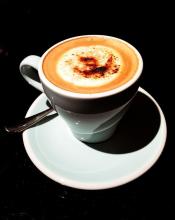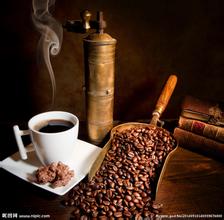How to understand the coffee roasting curve? senior barista
Introduction to coffee roasting
However, as a roaster, the choice of coffee roasting degree should not only start from the roaster's personal interests and hobbies, but should focus on the needs of the audience, so there is a reason for shallow baking and a reason for deep roasting. There is no difference between the two. If your guests pursue the taste and the local characteristics of the coffee origin, then light baking can make your customers more clearly aware of what they need. On the contrary, if your guests prefer round, mellow and sweet coffee, then medium or even deep roasting is more appropriate. But Uncle Dou wants to say a word for the roasters who roast coffee deeply. Many roasters with light roasting style think that when coffee is roasted deeply, there is no other flavor except bitterness in the coffee, and the flavor of coffee is lost in deep roasting. This statement is not objective. A roaster who is good at deep roasting coffee, not only is there no burning smell in his coffee, but the guests can also feel the flavor of the coffee. In other words, the coffee will only be roasted to the black out of oil, the smell of smoke is extremely strong, he is not a baker, but charcoal burning.
With the continuous absorption of heat, more and more volatile gases (mainly water vapor) accumulate in the coffee beans, which causes the pressure inside the beans to far exceed the external atmospheric pressure, even reaching 25 atmospheric pressure (2533 kPa). The internal pressure is so high that it is like a small bomb that is finally enough to tear the structure of the raw coffee beans. This critical moment is called First Crack.
In a sense, as long as there is an explosion of coffee beans, they can be cooled, ground and drunk, but it is still a very shallow baking degree, which may not be the best baking degree we want. Next, we should pay close attention to the stage of roasting, observe the color of coffee raw beans by sampling, smell the aroma changes of coffee raw beans, find the best baking degree, and then cool it decisively. We know that the ingredients in raw coffee beans are in the following order: sugars, moisture, fatty substances, proteins, acids, minerals, alkaloids (such as caffeine) and other volatile aromatic substances. The content of these substances essentially determines the flavor of a cup of coffee drink with the increase of the surface temperature of coffee beans and the decrease of the temperature difference between bean surface and core. A considerable proportion of the water has been dissipated in the process. If you look at the sample in the sampling rod at this time, you will find that a light yellowish brown begins to appear, and then look down and smell it, and the original pure smell of hay is replaced by a hint of sweetness, which means that the time has come for chemical reaction to dominate baking. At this time, we should give enough heat supply so that a large number of chemical reactions that need to absorb heat and produce charming flavor can be carried out smoothly. It is precisely because of the addition of a large number of endothermic chemical reactions that the temperature rise slope of coffee beans we have observed begins to slow down.

Important Notice :
前街咖啡 FrontStreet Coffee has moved to new addredd:
FrontStreet Coffee Address: 315,Donghua East Road,GuangZhou
Tel:020 38364473
- Prev

Plant yield of coffee trees planting environment what provinces and cities in China can grow coffee
The planting environment of coffee trees introduces the coffee trees planted in the north-south direction and east-west direction, and there is no difference in yield. This is the orange fruit obtained by the Coffee Institute of Chulvado in a test lung. The trial material is a rejuvenated coffee tree. It is said that the coffee trees that plant in the east-west direction appear to grow more vigorously than those in the north-south direction six months after cutting off the dry and withdrawing new branches; however, to the second
- Next

Introduction to the matching of grinding thickness of Italian coffee beans
Espresso introduction if you are using a coffee cup with a scale, that would be great. But you still need to measure the total weight of the coffee to better determine whether the grinder needs to be readjusted. If you use an automatic divider, the total weight of the coffee you make will have an error of about 3G. Since the scale on the cup can help you determine the liquid volume of coffee, you need to spend more
Related
- Beginners will see the "Coffee pull flower" guide!
- What is the difference between ice blog purified milk and ordinary milk coffee?
- Why is the Philippines the largest producer of crops in Liberia?
- For coffee extraction, should the fine powder be retained?
- How does extracted espresso fill pressed powder? How much strength does it take to press the powder?
- How to make jasmine cold extract coffee? Is the jasmine + latte good?
- Will this little toy really make the coffee taste better? How does Lily Drip affect coffee extraction?
- Will the action of slapping the filter cup also affect coffee extraction?
- What's the difference between powder-to-water ratio and powder-to-liquid ratio?
- What is the Ethiopian local species? What does it have to do with Heirloom native species?

